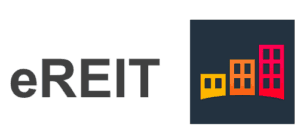The “democratization of investment” in historically closed industries have been the buzzwords of choice since the JOBS Act was signed into to law in 2012. But only since March 25, 2015, when the SEC voted to adopt the proposed rules implementing Title IV, was access truly granted to all.
 Title IV effectively amended Regulation A and created the framework for the new Regulation A, which is known in the crowdfunding industry as “Reg A+.” Reg A+ provides an exemption from having to file reports with the SEC for US and Canadian issuers seeking to raise up to $50M in a 12-month period. The rules create a two-tiered approach, where Tier I issuers can raise up to $20M in a 12-month period and Tier II issuers can raise up to $50M.
Title IV effectively amended Regulation A and created the framework for the new Regulation A, which is known in the crowdfunding industry as “Reg A+.” Reg A+ provides an exemption from having to file reports with the SEC for US and Canadian issuers seeking to raise up to $50M in a 12-month period. The rules create a two-tiered approach, where Tier I issuers can raise up to $20M in a 12-month period and Tier II issuers can raise up to $50M.
Further, securities sold through Reg A+ are unrestricted, thus allowing the possibility of immediate secondary market trading. Over the past year, Reg A+ has been utilized in the crowdfunding industry and provided a workable exemption for several notable prior and upcoming offerings.
While Reg A+ may be the most opportunistic exemption for fundraising in 2016, issuers should be aware of the full spectrum of legal considerations when structuring and choosing their fundraising strategy. With a little bit of diligence, an issuer may be able to mitigate significant regulatory risk at the outset and maximize the number of investors who can participate in their fundraising process.
Innovative Applications of Reg A+: A Case Study of the Fundrise eREIT
 Fundrise’s eReit was perhaps the year’s most innovative application of the new exemption. Fundrise, a real estate crowdfunding platform, introduced an “Income eREIT” to the market on December 3, 2015 and experienced immediate, intense demand. As of March 3, 2016, the company, which is funding the eREIT in tranches, had raised $23.4M in settled subscriptions. The eREIT invests in a diversified portfolio of real estate investments across the United States and projects at least a 15% annualized return in the first two years. The offering is available to an unlimited number of both accredited and unaccredited investors for as little as $1,000.00. Secondary market opportunities for Fundrise eREIT investors is unclear as the subscription documents contain representations and warranties to limit resale activity. The Offering Memorandum, alternatively, provides for a redemption schedule in the event that investors seek to exit (but not until shares have been held for 6 months).
Fundrise’s eReit was perhaps the year’s most innovative application of the new exemption. Fundrise, a real estate crowdfunding platform, introduced an “Income eREIT” to the market on December 3, 2015 and experienced immediate, intense demand. As of March 3, 2016, the company, which is funding the eREIT in tranches, had raised $23.4M in settled subscriptions. The eREIT invests in a diversified portfolio of real estate investments across the United States and projects at least a 15% annualized return in the first two years. The offering is available to an unlimited number of both accredited and unaccredited investors for as little as $1,000.00. Secondary market opportunities for Fundrise eREIT investors is unclear as the subscription documents contain representations and warranties to limit resale activity. The Offering Memorandum, alternatively, provides for a redemption schedule in the event that investors seek to exit (but not until shares have been held for 6 months).
The new Regulation A+ exemption is not without its ambiguities and potential challenges.
 The SEC has not addressed one concern that relates to limits on the number of investors in these $20-$50M offerings. At first glance, this issue was covered with the JOBS Act. The JOBS Act amended the Securities Exchange Act of 1934 (the “Exchange Act”) to increase the threshold from 499 to 1,999 “holders of record” for most issuers. This means that private funds that were previously subject to a 499 investor cap could now have up to 1,999 investors without having to register with the SEC under Section 12(g) of the Exchange Act (i.e. become a public reporting company).
The SEC has not addressed one concern that relates to limits on the number of investors in these $20-$50M offerings. At first glance, this issue was covered with the JOBS Act. The JOBS Act amended the Securities Exchange Act of 1934 (the “Exchange Act”) to increase the threshold from 499 to 1,999 “holders of record” for most issuers. This means that private funds that were previously subject to a 499 investor cap could now have up to 1,999 investors without having to register with the SEC under Section 12(g) of the Exchange Act (i.e. become a public reporting company).
The 1,999 quota does not necessarily apply to issuers regulated under the Investment Company Act of 1940 (the “Investment Company Act”).
Under the Investment Company Act, Section 3(a)(1)(A) an “investment company” is an issuer which is or holds itself out as being engaged primarily, or proposes to engage primarily, in the business of investing, reinvesting or trading in “securities.” To avoid registration and the burdensome requirements that come with it, many issuers in the crowdfunding space operating as private investment funds rely on the exemption set forth in Section 3(c)(1). Companies seeking to claim the Section 3(c)(1) exemption from registration may not be beneficially owned by more than one hundred persons and must not be making or propose to make a public offering of such securities.
This means that issuers claiming the Section 3(c)(1) exemption must limit subscriptions to 99 investors to be compliant, and thus may struggle to reach the $20M-$50M fundraising targets permitted under Reg A+, and the unlimited raise amounts allowed under Reg D.
Counsel should therefore consider several points when evaluating issuer clients including whether (1) your company falls within the definition of investment company, (2) alternative exemptions/exclusions under the Investment Company Act are available, and (3) alternative business approaches that maximize investor allowances would be beneficial.
Exploring the Fundrise eREIT’s Treatment of the Investment Company Act
The Offering Memorandum (“OM”) for the Fundrise eREIT, directly addressed Investment Company Act issues. In doing so, the company (and its counsel at Goodwin Proctor) took a position that neither it nor its subsidiaries fall under the definition of an investment company in Section 3(a)(1)(A), because they will be “primarily engaged in non-investment company businesses related to real estate.”
Still, the eREIT OM provides three mutually exclusive statutory exclusions on which it would rely in the event that the company were deemed an investment company.
 Reiterated throughout the OM, the company explains that it intends to “directly or through our subsidiaries, to originate, invest in and manage a diversified portfolio of commercial real estate investments.” And further that it will monitor its subsidiaries’ holdings to ensure that each falls within the applicable exemptions from registration under the Investment Company Act based on the exclusions set forth in Sections 3(c)(1) and 3(c)(7). The Fundrise eREIT was structured to accept an unlimited number of investments up to a $50M total raise amount and its OM provides no discussion of the 99 investor limitation in the event that the Section 3(c)(1) exemption were to be relied upon by a subsidiary.
Reiterated throughout the OM, the company explains that it intends to “directly or through our subsidiaries, to originate, invest in and manage a diversified portfolio of commercial real estate investments.” And further that it will monitor its subsidiaries’ holdings to ensure that each falls within the applicable exemptions from registration under the Investment Company Act based on the exclusions set forth in Sections 3(c)(1) and 3(c)(7). The Fundrise eREIT was structured to accept an unlimited number of investments up to a $50M total raise amount and its OM provides no discussion of the 99 investor limitation in the event that the Section 3(c)(1) exemption were to be relied upon by a subsidiary.
Section 3(c)(5)(C) is also discussed as an available exclusion, which excludes real estate programs from the definition of investment company if it is “primarily engaged” in purchasing or acquiring “mortgages and other liens on and interests in real estate.” The company goes on to disclaim the security of this argument, and references the SEC Concept Release entitled “Companies Engaged in the Business of Acquiring Mortgages and Mortgage Related Instruments” (Investment Company Act Rel. No. 29778), which describes that the exclusion is under review.
Policy Recommendations
The innovative applications of Reg A+ in the marketplace this year have been notable. One would think that the JOBS Act is achieving what it was designed to accomplish – create jobs, spark new industries, and expand access to startup growth funding. Still, further review is needed so that the various stakeholders in Reg A+ issuances, and the crowdfunding marketplace at large, are protected in their investments.
Clearing up some of these outstanding ambiguities would permit even greater participation and reduce the risk, and cost, of establishing real estate programs, like Fundrise’s eREIT, and other creative Reg A+ offering strategies in this new, burgeoning space.
- First, the SEC would tremendously benefit the crowd-finance industry by enhancing the exclusions from the definition of “investment company” in Section 3(b) to include issuers who will be investing in a single corresponding investment (real estate or otherwise).
- Second, the SEC should consider additionally, or alternatively, striking the investor limitation found in Section 3(c)(1) of the Investment Company Act to correspond with the amended Exchange Act limits on holders of record afforded post-JOBS Act to certain issuers.
 Third, the SEC should provide additional guidance on whether issuers availing themselves of the uplifted restrictions on general solicitation (such as the Fundrise eREIT), pursuant to Reg A+ or Reg D Rule 506(c) are prohibited from relying on Section 3(c)(1) and 3(c)(7) exclusions under the Investment Company Act of 1940, as such exclusions are specifically afforded to issuers not proposing or making public offerings. This “public offering” limitation further implicates the transferability features of shares issued in Reg A+ offerings and the issuer’s ability to “go public.” The Elio Motors mini-IPO supported by industry leader FundAmerica, which subsequently listed its shares on the OTCQX market is a ripe example.
Third, the SEC should provide additional guidance on whether issuers availing themselves of the uplifted restrictions on general solicitation (such as the Fundrise eREIT), pursuant to Reg A+ or Reg D Rule 506(c) are prohibited from relying on Section 3(c)(1) and 3(c)(7) exclusions under the Investment Company Act of 1940, as such exclusions are specifically afforded to issuers not proposing or making public offerings. This “public offering” limitation further implicates the transferability features of shares issued in Reg A+ offerings and the issuer’s ability to “go public.” The Elio Motors mini-IPO supported by industry leader FundAmerica, which subsequently listed its shares on the OTCQX market is a ripe example.
Ambiguities in securities law create challenges for investors, issuers and attorneys forced to take conservative positions on problematic questions. Clarification from the SEC and action to rectify these inconsistencies would increase the JOBS Act’s potential to achieve its intended reach by encouraging utilization of Reg A+ in the marketplace and generally diminishing risk for market participants.
Robin Sosnow, Esq., MBA, is the Principal of the Law Office of Robin Sosnow, PLLC, in New York City. Her practice focuses on business law in the areas of startups and crowdfunding. She is passionate about the power of technology in law and business. She previously acted as General Counsel for the real estate crowdfunding platform iFunding, founded in 2012. Robin is licensed to practice law in Massachusetts and New York. She holds a JD/ MBA from Suffolk University and a BA in International Studies, from Arcadia University, summa cum laude. Robin is an active member of CityBar, NYCLA, and the NYSBA and various NY MeetUps. She can be reached at sosnowr@gmail.com and Twitter @RobinSosnowEsq.



